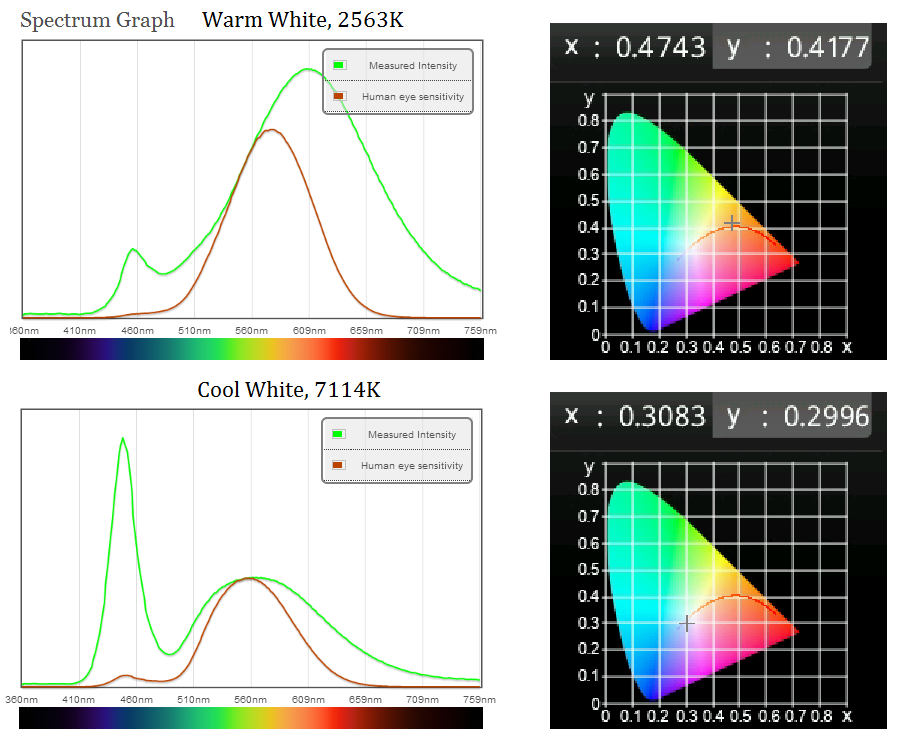FAQ - How is color temperature calculated?
Color temperature for general white lighting applications usually falls between 2500K to 8000K. Lower correlated color temperatures denote a warmer white tending towards yellow, while higher temperatures, generally above 4000K, are described as having a 'cool' bluish-white appearance.
Color temperature is calculated from the color spectrum. First the spectrum is converted to the CIE 1931 color space, from there it is converted again to the CIE 1960 color space. At this point the color is compared to a mathematical approximation of the planckian locus and the closest matching point is the color temperature. Colors rarely fall directly on the curve, only colors within 5% of the curve are considered to have a valid temperature.
The figure below illustrates the conversion of two lights' spectral outputs to the CIE 1931 color space. The red curve is the planckian locus tracing the approximate color that an incandescent black body would take at different temperatures. The crosshair pinpoints the matching color of the light along the planckian locus and thus it's correlated color temperature.

Related Pages
- Color shift and stability of LEDs
- LEDs and Color Rendering Index
- How do we test LED lights?
- How accurate are our systems of measurement?
- What makes a good incandescent/halogen replacement?
Back to FAQ index